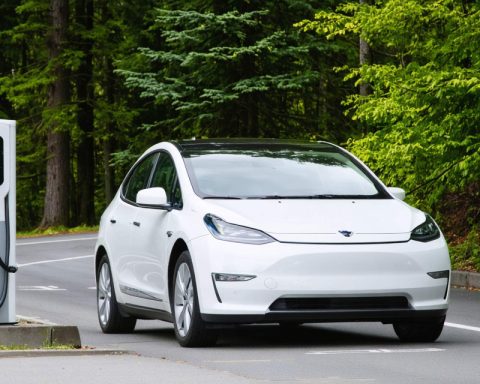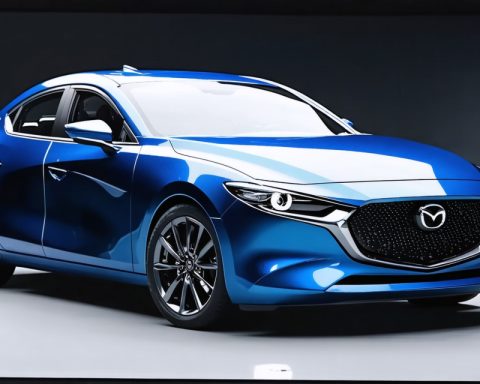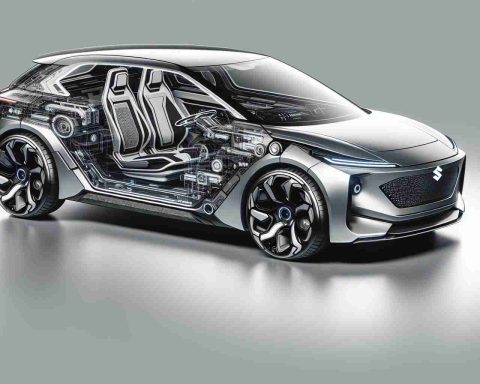- The automotive industry is undergoing a transformative shift towards electric vehicles (EVs), driven by both established brands and newcomers.
- Iconic brands like Mercedes-Benz, Hyundai, and Tesla are at the forefront, developing luxury and performance EVs in various global factories.
- Detroit’s automotive scene is transforming with the introduction of eco-conscious models like the GMC Hummer EV and Silverado EV.
- Tesla continues to innovate, pushing design boundaries with the Model S and Cybertruck from its Californian and Texan factories.
- Luxury meets sustainability in BMW’s Rolls-Royce Spectre and Mini Cooper SE, emphasizing high-end electric mobility from the UK.
- Emerging companies like Rivian and Vietnam’s VinFast are challenging conventional norms, entering the EV market with ambitious models.
- The global push towards EVs is driven by environmental needs and technological advancements, marking a clear shift towards a sustainable future.
In the heart of bustling automobile factories from Stuttgart to Silicon Valley, a quiet revolution hums with the charge of a million volts. The world is witnessing an automotive renaissance as venerable brands alongside innovative newcomers race to define the future of driving through electric vehicles (EVs). This isn’t merely a fleet of new models, but a fundamental shift in what it means to drive.
Consider Mercedes-Benz’s audacious EQS sedan, cradled in the luxury of Sindelfingen, Germany. It’s a machine envisioned to be both a cocoon of opulence and a beacon of sustainability—a curious juxtaposition mirrored in the sleek lines of the EQE, born in Alabama’s bustling Tuscaloosa plant. Meanwhile, Hyundai’s vibrant assembly lines in Ulsan, South Korea, are crafting the bold forms of the Ioniq 5 and Kona Electric, showcasing that electric doesn’t have to mean boring.
Over in the United States, Detroit—a city synonymous with gasoline glory—reinvents itself. The GMC Hummer EV thunders onto the scene, a behemoth from the Detroit Factory ZERO, an eco-conscious leviathan in pickup clothing. Its sibling, the Silverado EV, hails from the same lineage, challenging what you think you know about American trucks.
Tesla’s looms large in this narrative, carving out a path for itself with the Model S paving the way for a series of successors made in its Fremont, California, stronghold. With each roll of a Cybertruck off the assembly line in Austin, Texas, the company pushes the envelope further, urging consumers to rethink the very silhouette of a pickup truck.
Meanwhile, in England’s hallowed automotive dirts, BMW’s Rolls-Royce Spectre whispers luxury in the exclusive factory at Goodwood, West Sussex. Not far off, Mini’s Oxford plant crafts the Cooper SE, a pint-sized marvel proving that big ideas can come in small frames.
But it’s not just about tradition; it’s about the daring upstarts. Rivian’s vibrant electric palette springs from Normal, Illinois, challenging convention with its R1T and R1S, each promising not just performance, but adventure. And then there’s VinFast from Hai Phong, Vietnam—an ambitious new player aiming to capture global imaginations with its VF series, destined to traverse roads from Vietnam to North Carolina by 2025.
This wave of electrified ambition flows into the streets from China to Mexico, influencing how we think about mobility. It’s a transformation guided by both environmental necessity and technological possibility. The takeaway resonates clear: The path forward is electric, driven by innovation and the shared vision of a sustainable horizon. As the pace quickens, it’s clear—the era of electric is not upon us; it’s propelling us forward, one charged journey at a time.
The Electric Vehicle Revolution: What You Need to Know and Why It Matters
An Overview of the Electric Vehicle Surge
The automotive industry is undergoing a significant transformation, with electric vehicles (EVs) taking center stage. Major car manufacturers like Mercedes-Benz, Hyundai, Tesla, and innovative new players such as Rivian and VinFast are spearheading this change worldwide. Several key facts and trends characterize this shift:
1. E-Mobility on the Rise: Global EV sales grew significantly in 2022, driven by policy support, technological advancements, and consumer demand for sustainable options. According to the International Energy Agency, electric car sales reached over 10 million globally, primarily due to increased availability and falling battery costs.
2. Government Incentives and Regulations: Many countries offer incentives such as tax breaks, rebates, and grants to promote EV adoption. Stringent emission regulations also push manufacturers towards EV production to meet environmental requirements.
3. Battery Technology Advances: Innovations in battery technology are leading to longer ranges, faster charging times, and reduced costs. Companies like Panasonic and CATL are at the forefront, working on solid-state batteries that promise higher energy density and safety.
4. Infrastructure Challenges and Solutions: The proliferation of charging stations is vital for EV adoption. Governments and private companies are investing heavily in this infrastructure, with examples like Tesla’s Supercharger network and ChargePoint stations making long-distance travel more feasible.
EV Industry Trends and Market Forecasts
– Market Growth: The global EV market is projected to grow at a compound annual growth rate (CAGR) of over 20% from 2023 to 2030, reaching an estimated value of $800 billion.
– Regional Insights: China remains the largest market for EVs, followed by Europe and North America. Countries like Norway and the Netherlands have high EV penetration due to strong policy frameworks.
– Consumer Preferences: There is a growing inclination towards SUVs and crossovers in the EV segment, with manufacturers rolling out models that cater to this trend.
Challenges and Controversies
– Supply Chain Disruptions: The pandemic highlighted vulnerabilities in supply chains, affecting the production of critical components like semiconductor chips.
– Environmental Concerns: The mining and disposal of batteries pose environmental challenges. Manufacturers are focusing on recycling and sustainable material sourcing to mitigate these issues.
– Economic Barriers: Despite falling prices, EVs still have a higher upfront cost compared to traditional vehicles. However, lower running costs and incentives can offset this over time.
Practical Tips for Prospective EV Owners
– Conduct Research: Evaluate the range, charging time, and available infrastructure before making a purchase. Consider models that fit your specific needs and lifestyle.
– Explore Incentives: Check for local, state, or federal incentives that can make buying an EV more economical.
– Calculate Total Cost of Ownership: Consider factors like maintenance, fuel savings, and insurance costs to get a complete picture of the financial implications.
Actionable Recommendations
– Stay Informed: Regularly update yourself on the latest EV technologies and models. Following automotive news sources and forums can provide valuable insights.
– Plan Charging Needs: If possible, install a home charging unit for convenience. Public charging stations are expanding, but having a reliable home unit can be cost-effective.
– Test Drive Options: Before committing, test drive several models to experience the differences in performance, comfort, and features.
Conclusion
The future of transportation is undeniably electric, guided by the twin imperatives of innovation and sustainability. By embracing EVs, we can significantly reduce our carbon footprint and contribute to a greener planet. As technology continues to evolve and infrastructure improves, the transition to electric will become increasingly seamless and rewarding.
For more detailed information on electric vehicles, visit the official websites of leading manufacturers, such as Mercedes-Benz, Tesla, and Hyundai.













